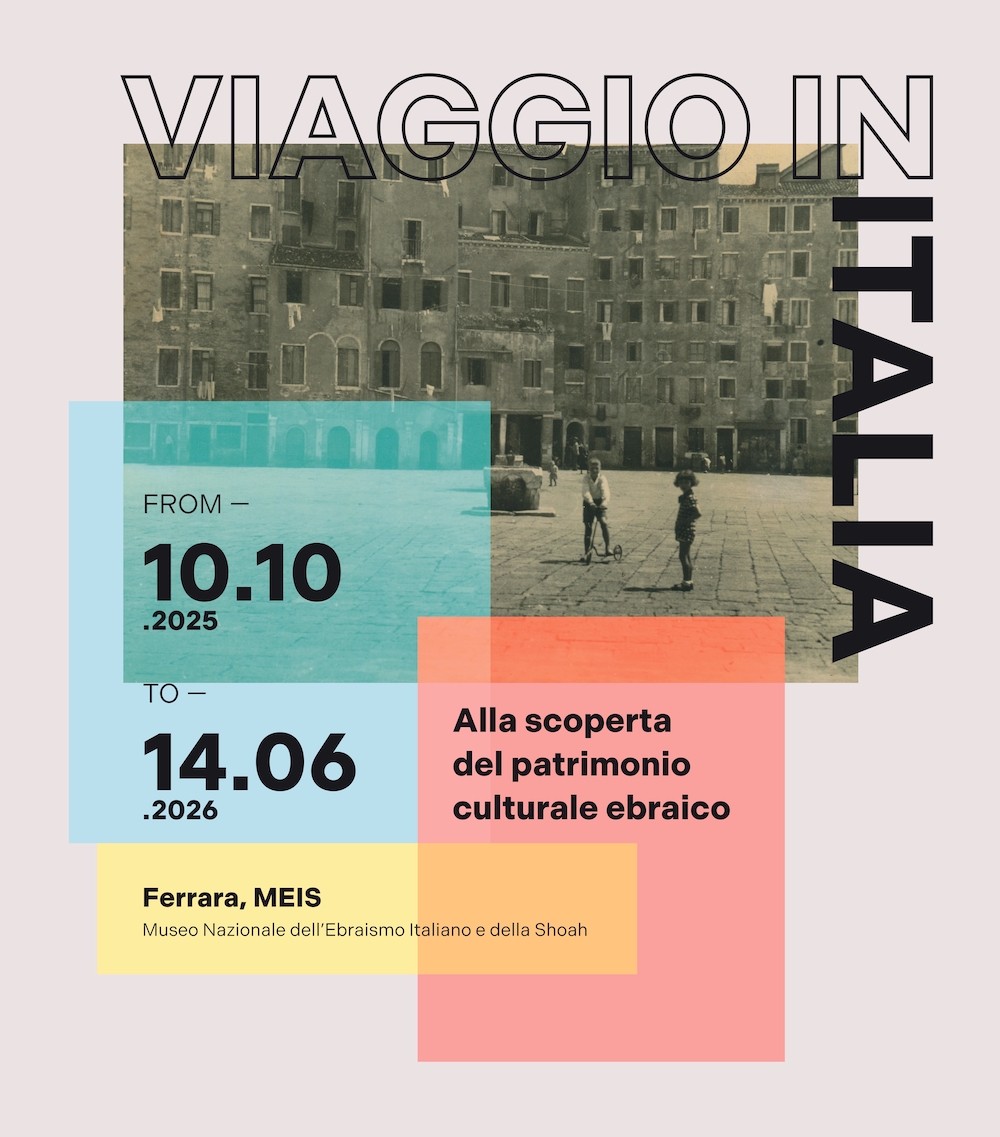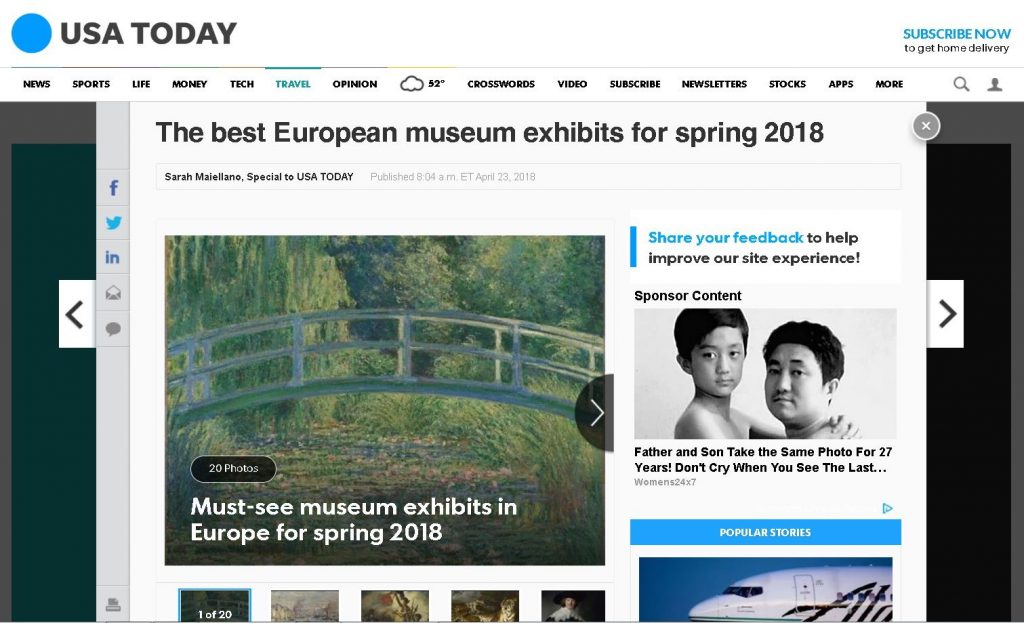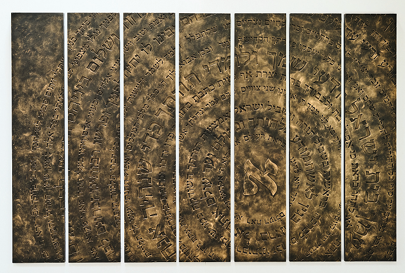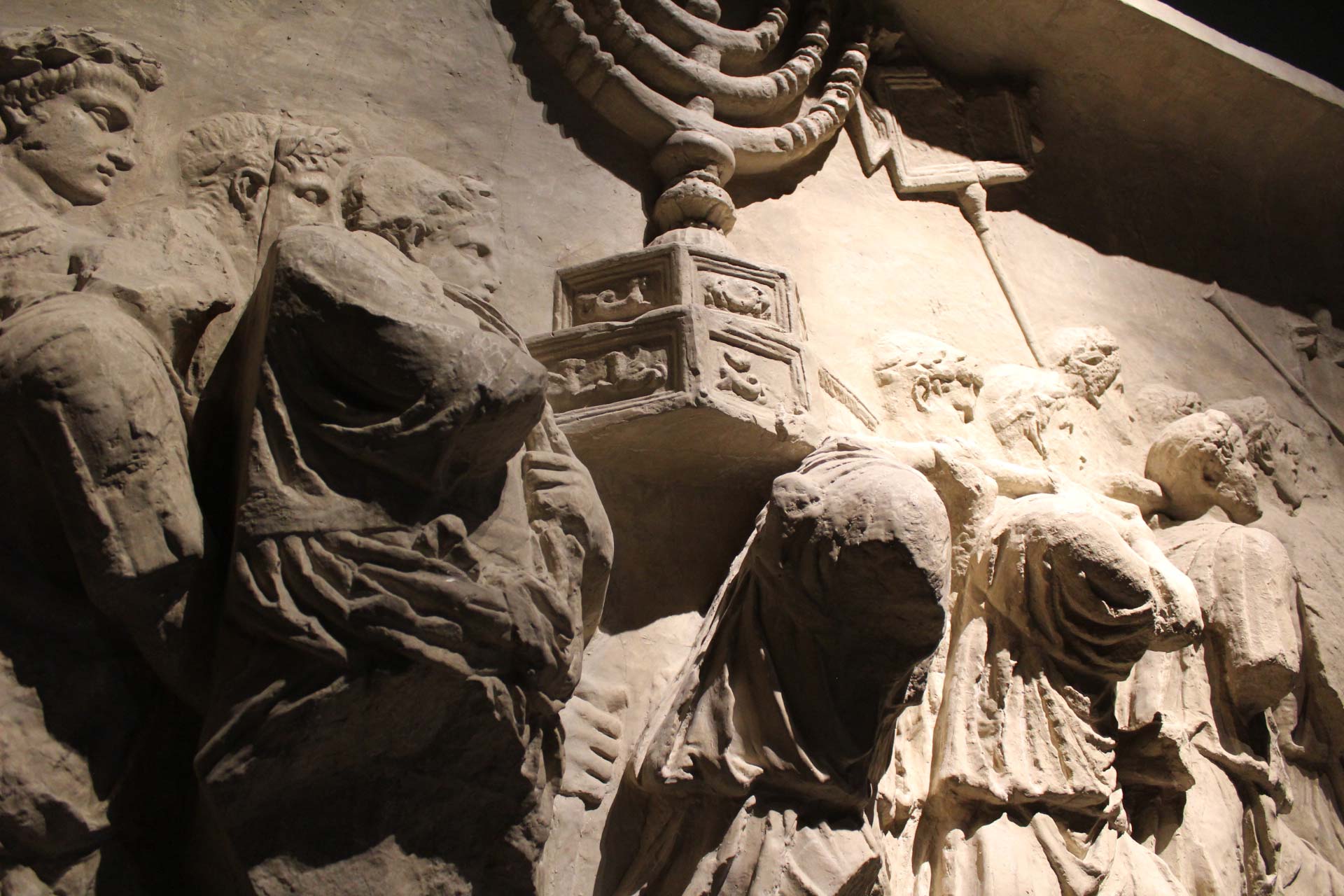
The best European museum exhibits for spring 2018

Sarah Maiellano, Special to USA TODAY
One of the best times to travel to Europe is the spring when the weather perks up but high-season prices haven’t yet kicked in. Museums throughout the continent typically open some of the year’s best exhibits at this popular time of year. This spring, Europe’s museums are revisiting important artists, including Rubens, Picasso, Rodin, Monet and Delacroix, as well as important moments in ancient and modern history. The following are the best exhibits to see in the next few months.
Picasso 1932 – Love, Fame, Tragedy at the Tate Modern in London Through Sept. 9, 2018
The year 1932 is considered a time so pivotal in Picasso’s life and work that it has been called his “year of wonders.” Now, the Tate Modern takes a month-by-month journey through the year to explore how his work was impacted by his family life, love affair, time spent between Normandy and Paris, and growing political, social and financial problems in Europe. The exhibit brings together more than 100 paintings, sculptures, and other works that Picasso created during that time, with the centerpiece Nude Woman in a Red Armchair.
High Society at the Rijksmuseum in Amsterdam Through June 3, 2018
Get up-close-and-personal with royals, aristocrats and wealthy citizens of Europe through grand, full-length portraits at the Dutch national museum this spring. Over 35 works by artistic masters including Velázquez, Sargent, Munch and Manet are on display, along with the centerpiece: Rembrandt’s spectacular wedding portraits of Marten Soolmans and Oopjen Coppit that are being shown for the first time after their restoration. Works for the exhibit are on loan from museums and private collections around the world including Paris, London, Florence, Vienna and Los Angeles. The Rijksmuseum has also pulled more than 80 prints and drawings from its own collection to portray the lives of the rich and powerful, including their parties and romances.
Gurlitt: Status Report at Kunstmuseum Bern in Switzerland April 19 – July 15, 2018
In 2012, almost 1,500 invaluable artworks by masters including Picasso, Munch and Matisse were discovered in the home of the son of a German art dealer who collected Jewish and so-called “degenerate art” under the Nazi regime. Many of these works were sold by force, confiscated, or stolen from museums and private collections. The art was donated to the Kunstmuseum in Bern which will show many of the works this spring.
Jews, an Italian Story: The First Thousand Years at The National Museum of Italian Judaism and the Shoah in Ferrara, Italy Through Sept. 16, 2018
Just opened in December, the new National Museum of Italian Judaism and the Shoah is presenting its first exhibit on the Italian Jewish experience from ancient Roman times until the Middle Ages. The historic town of Ferrara sits between Venice and Bologna and has a Jewish history dating back to early medieval times. The exhibit covers the first 1,000 years of Jews in Italy with over 200 artifacts, including manuscripts, medieval documents, epigraphs and objects such as rings, seals, coins, oil lamps and amulets. Many are on display for the first time and others are on loan from museums in Cairo, Naples, the Vatican, the U.K. and New York.
Rubens. Painter of Sketches at the Prado in Madrid Through Aug. 5, 2018
Peter Paul Rubens painted nearly 500 sketches in his career and is considered the most important painter of sketches in European art. In partnership with the Government of Flanders and the Boijmans Van Beuningen Museum in the Netherlands, the Prado has brought together nearly one-fifth of these works of art from its own collection and museums around the world, including the Louvre, the Hermitage, the National Gallery and the Metropolitan Museum of New York. Works included in the exhibit include The Expulsion of Adam and Eve from the Garden of Eden, Prometheus, and The Capture of Samson.
Sappho to Suffrage: Women who dared at the Weston Library, Bodleian Libraries, Oxford Through February 2019
To mark 100 years since the Representation of the People Act which gave many women in Great Britain and Ireland the right to vote, Oxford’s Bodleian Libraries takes on brave women in history in a nearly year-long exhibit. It covers 2,000 years of history from ancient Greek poetry to women’s suffrage in the U.K. through more than 80 items. Highlights include second-century BCE fragments of Sappho’s poetry written on papyrus (Sappho is a symbol of female homosexuality), Ada Lovelace’s 19th-century notes on mathematics, Mary Shelley’s Frankenstein manuscript, a Jane Austen manuscript, a musical score by Fanny Mendelssohn, and a recreation of a banner used by the Oxford Women’s Suffrage Society in 1908.
Rodin and the art of ancient Greece at the British Museum in London Through July 29, 2018
Legend has it that French sculptor Auguste Rodin visited the British Museum in 1881 and took inspiration from the Parthenon sculptures, leading him to incorporate what he saw into his work. Now, the British Museum revisits Rodin’s legacy 100 years after his death with a major exhibition featuring over 80 original plaster, bronze and marble sculptures on loan from Paris, including The Thinker and The Kiss. They’ll be juxtaposed with some of the Parthenon sculptures that inspired the artist.
Eleusis. The great mysteries at the Acropolis Museum in Athens Through May 31, 2018
The third in a series of exhibits of important ancient artifacts, the Acropolis Museum now focuses on Eleusis, a town about 11 miles northwest of Athens. On display are the most important artifacts found in the Eleusis archaeological excavation, including the statue Fleeing Persephone (circa 480 BC), a votive relief depicting Demeter and Kore (Persephone) (470-450 BC), ceremonial vessels, and monuments. The exhibition hall was designed to represent Telesterion, a great hall in Eleusis where sacred and ancient Greek religious rites were celebrated.
Delacroix (1798–1863) at The Louvre in Paris Through July 23, 2018
Though Eugène Delacroix is considered one of the giants of French painting, the last full retrospective on his work in Paris was held six decades ago (in 1963, the centenary year of his death). The Louvre has joined forces with the Metropolitan Museum of Art in New York to present a new exhibition with 180 of his works — mostly paintings — spanning his 40-year career. To cover the three major periods in his life, the work is divided into three sections: his break with neoclassicism; large public murals and easel painting; and landscape painting.
Monet & Architecture at the National Gallery in London Through July, 29 2018
In the first entirely Monet exhibition in London in the last two decades, the National Gallery this spring focuses not on his landscapes, but his architecture paintings. More than a quarter of the 75 paintings in the exhibit come from private collections and therefore have been rarely seen in public. Monet’s architecture work spans his long career from the mid-1860s to his 1912 show of Venetian paintings.
Altri contenuti

Dimore di luce

29 gennaio, Processo a Priebke. 30 anni dopo

Italia Ebraica nel mondo, 11 dicembre

Scatti di Storia, 4 dicembre



